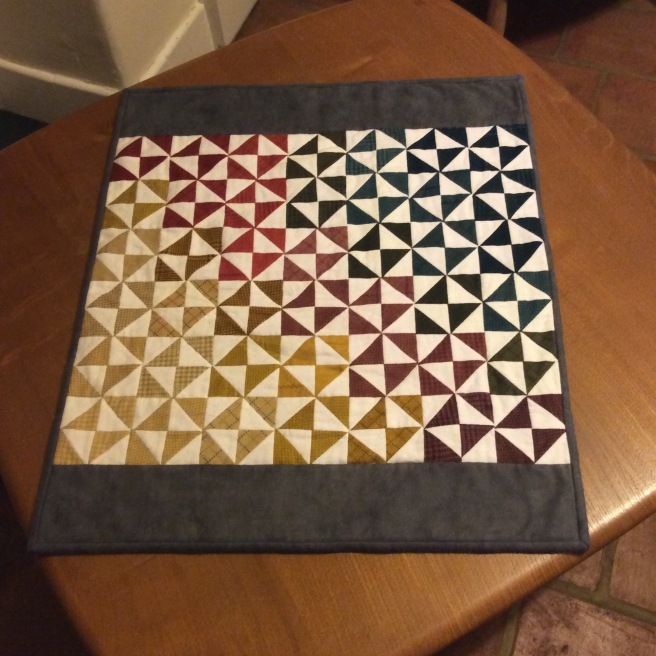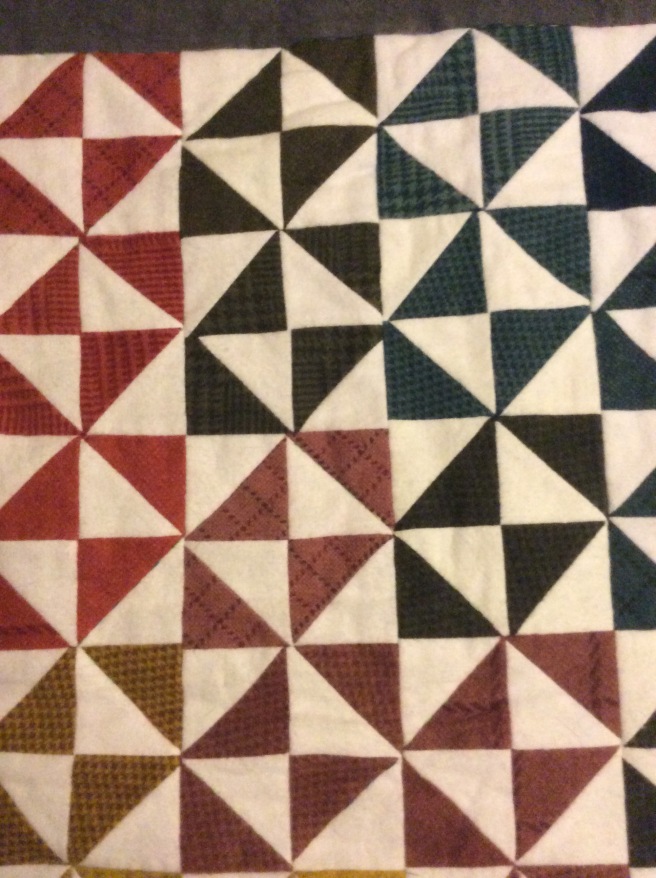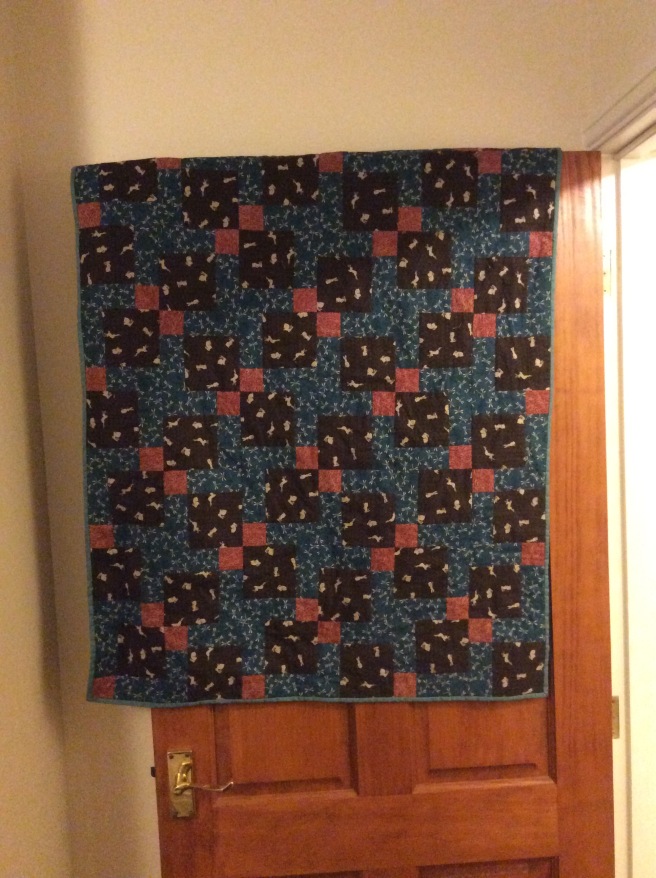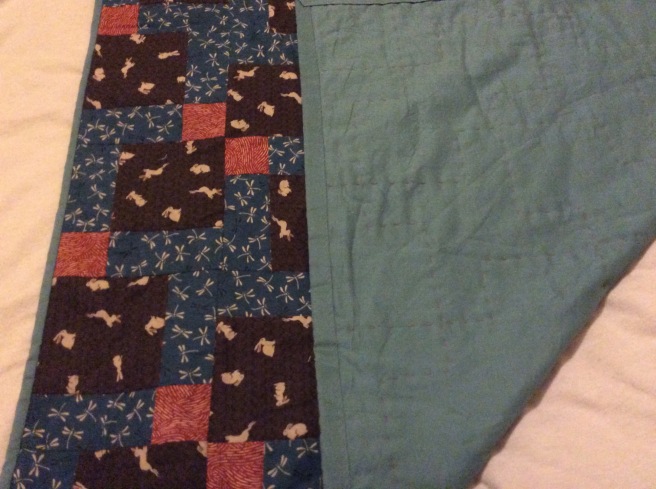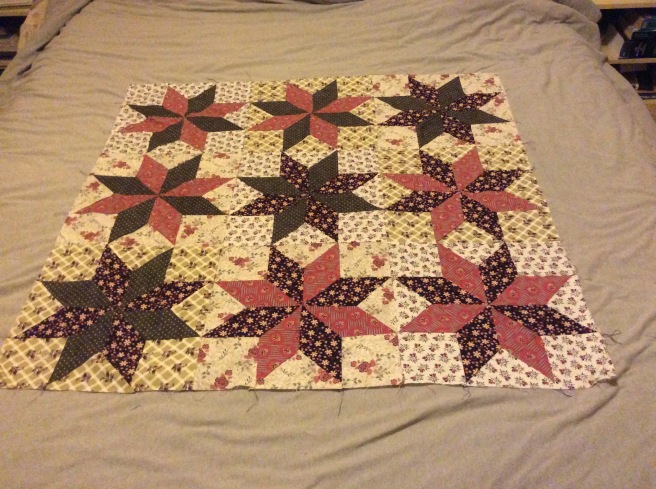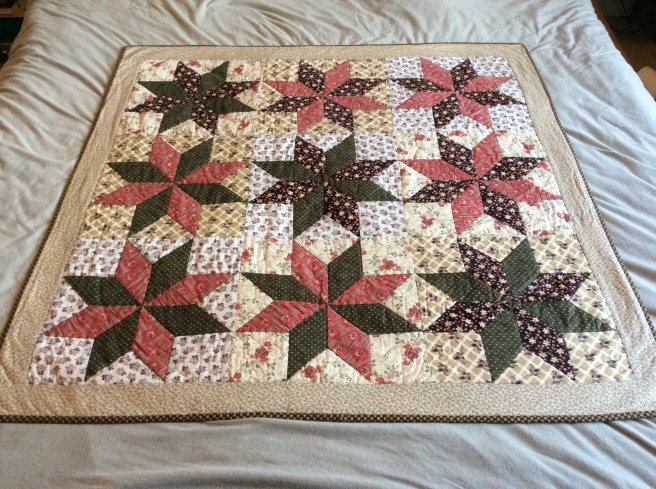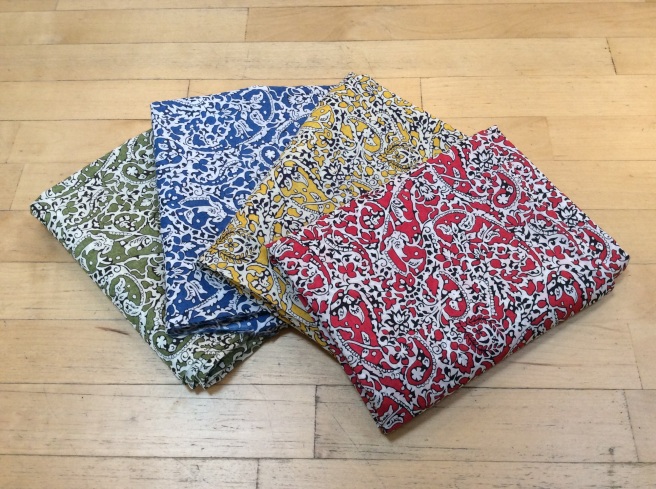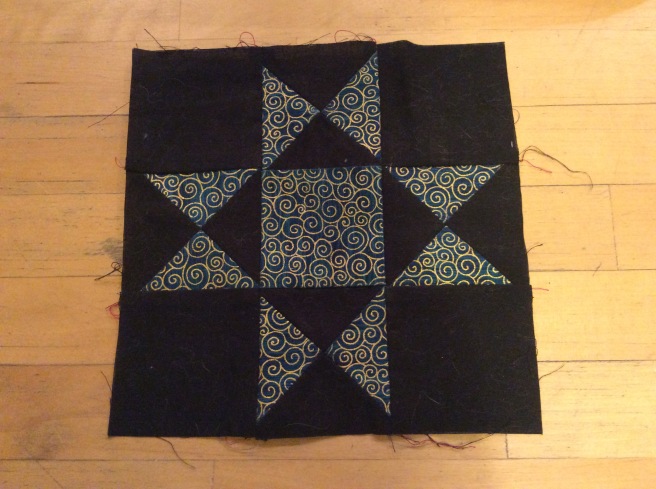Although I still haven’t gotten round to basting the immense faceted jewels quilt top, I have been making some smaller quilts from its offcuts.
This first quilt came about because a miscalculation meant I was left with over a hundred 2.5″squares of fabric, mainly sewed into strips of two or six. It is quilted using a variegated thread in 1930s colours, which complemented the fabric.

I had already made this quilt once a few years ago for my friend Shirin’s baby using Kaffe Fassett shot cottons (it was then I learned the hard way that the points can’t be made by cutting a nine-patch square in half). I think I based it on a photo I saw somewhere on the internet, but I haven’t been able to find it again. I think the design would also look good with Amish colours on a dark background.
Although I loved making this quilt, I was a bit disappointed when it came out of the washing machine as it had been dyed by something else in there. The fabrics also seem a bit washed out as I had very little of the brighter shades left. However, I think it looks good, if a bit more antique than I had intended.
I’m much happier with this second quilt which is made from the triangular offcuts of the faceted jewels quilt.

I chose the design because I had exactly 64 squares, and this grid accommodated them exactly. The quilt is backed with a Kaffe Fassett print which I have had for a while (I have about 8m of it!). One of the things I like about quilting is the serendipity of realizing that a fabric you’ve had for years, and perhaps begun to despair of, is one day the only thing that will do for a particular project.
I have been reading Making History: Quilts & Fabric from 1890-1970 by textile historian, quilter, and fabric designer Barbara Brackman (her quilt wreck blog posts are fascinating). In the following extract she describes the key features of 1930s quilts, and I think these two modern examples fit the criteria quite well.









